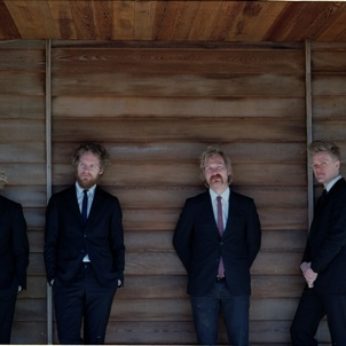Composer: Julius Zarębski (b. 1854 - d. 1885)
Performance date: 01/07/2014
Venue: Bantry Library
Composition Year: 1885
Duration: 00:35:39
Recording Engineer: Richard McCullough, RTE
Instrumentation Category:Small Mixed Ensemble
Instrumentation Other: pf, 2vn, va, vc
Artists:
Danish Quartet (Frederik Øland, Rune Sorensen [violins], Asbjørn Nørgaard [viola], Fredrik Sjölin [cello]) -
[quartet]
Philippe Cassard -
[piano]

Julius
Zar?bski comes from the great nineteenth century tradition of
composer-virtuosos. Like all those great pianists he had a cosmopolitan
education, born in Ukraine, studies in Vienna, St Petersburg and Rome, where he
became Liszt’s favourite student. It was Liszt who encouraged him to compose,
but his performance schedule took him all over Europe from Istanbul to London,
including a celebrated appearance at the great Paris Exhibition of 1878. He
wrote a certain amount of solo piano music, but the Piano Quintet was his
magnum opus, written when he knew he was dying of tuberculosis.
For
a work by a piano virtuoso it is remarkable that the piano is treated as primus inter pares rather than as a
vehicle for spectacular virtuosity, very much in the manner of Brahms’ handling
of the clarinet in his quintet from six years later. The movement develops with
a wave of dramatic contrasts, great sweeping themes in strings and piano
alongside introspective moments for solo strings, like the reflective musing by
the cello midway through the development. The first subject is a big, lyrical
theme full of power, while the second subject is gently melancholic. The
recapitulation and coda see some impressive climaxes.
The
Adagio is pure magic with a glorious murmuring effect in the strings to a
strange off-beat accompaniment by the piano. The soulful main theme follows
with expressive interplay amongst the strings. Unusually the piano solo opens
the middle section in a bright G major, a section notable for delicacy as much
as lyricism. The recapitulation of the main theme leads inexorably back to the
enigmatic opening murmuring and a quiet close with a last glimpse of the main
theme.
The
madcap Scherzo opens with a crazy gallop that briefly unleashes the full
quintet followed by a contrasting idea in 2/4. An unexpected fugal development
follows leading to an expressivo trio
before the gallop is allowed a brief return. Then just to confuse, the gallop
is allowed to kick off the Finale, and
we realise this movement is going to revisit the earlier movements. First a
folk-like theme is introduced that acts as a rondo theme with a series of
episodes that give increasing prominence to the soloist. Nothing is as
expected, each idea is explored with fantasy and exuberance, with the final
recollection of the opening movement acting as a moment of triumph.
Copyright © 2025 West Cork Music. All rights reserved.
Designed and developed by Matrix Internet